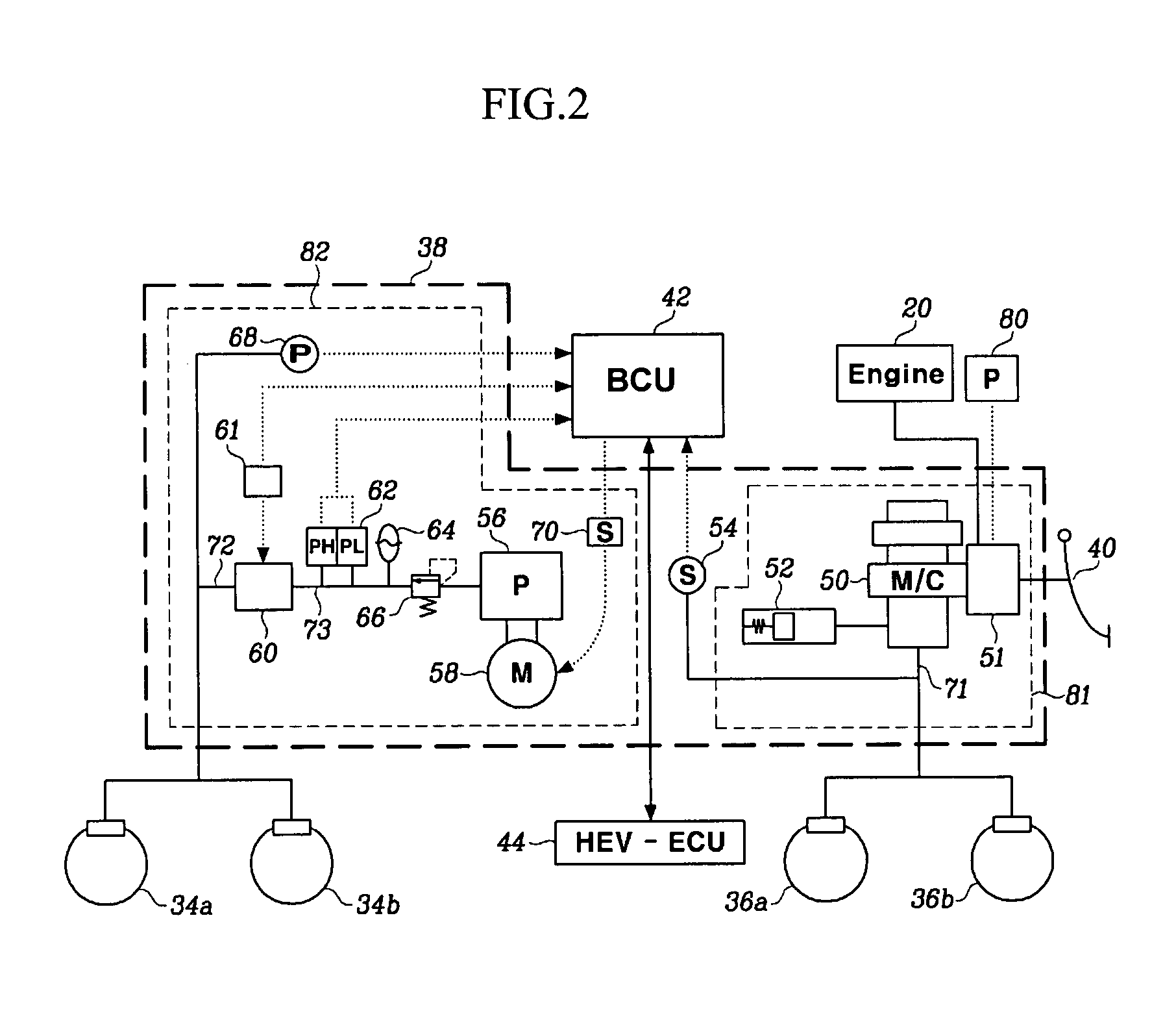Apparatus and method for controlling regenerative braking of an electric vehicle
a technology of electric vehicles and regenerative braking, which is applied in the direction of braking components, gas pressure propulsion mountings, driver interactions, etc., can solve the problems of insufficient regenerative braking, negatively affecting the vehicle's dynamic control, and driver confusion, so as to improve the energy reclamation efficiency of regenerative braking and optimize the distribution of braking for
- Summary
- Abstract
- Description
- Claims
- Application Information
AI Technical Summary
Benefits of technology
Problems solved by technology
Method used
Image
Examples
Embodiment Construction
[0056]An embodiment of the present invention will hereinafter be described in detail with reference to the accompanying drawings.
[0057]FIG. 1 is a schematic diagram of an electric vehicle according to an embodiment of the present invention.
[0058]The present invention is applicable not only to a hybrid electric vehicle but also to a pure electric vehicle. However, an embodiment in which the spirit of the present invention thereof is applied to a pure electric vehicle is obvious from an embodiment described hereinafter, in which the spirit of the present invention is applied to a hybrid electric vehicle. Therefore, an embodiment in which the spirit of the present invention is applied to a hybrid electric vehicle is hereinafter described in detail.
[0059]As shown in FIG. 1, a hybrid electric vehicle according to an embodiment of the present invention includes an engine 20 and a motor / generator unit (hereinafter referred to as M / G unit) 22 as its power source.
[0060]In a front-wheel drive...
PUM
 Login to View More
Login to View More Abstract
Description
Claims
Application Information
 Login to View More
Login to View More - R&D
- Intellectual Property
- Life Sciences
- Materials
- Tech Scout
- Unparalleled Data Quality
- Higher Quality Content
- 60% Fewer Hallucinations
Browse by: Latest US Patents, China's latest patents, Technical Efficacy Thesaurus, Application Domain, Technology Topic, Popular Technical Reports.
© 2025 PatSnap. All rights reserved.Legal|Privacy policy|Modern Slavery Act Transparency Statement|Sitemap|About US| Contact US: help@patsnap.com



